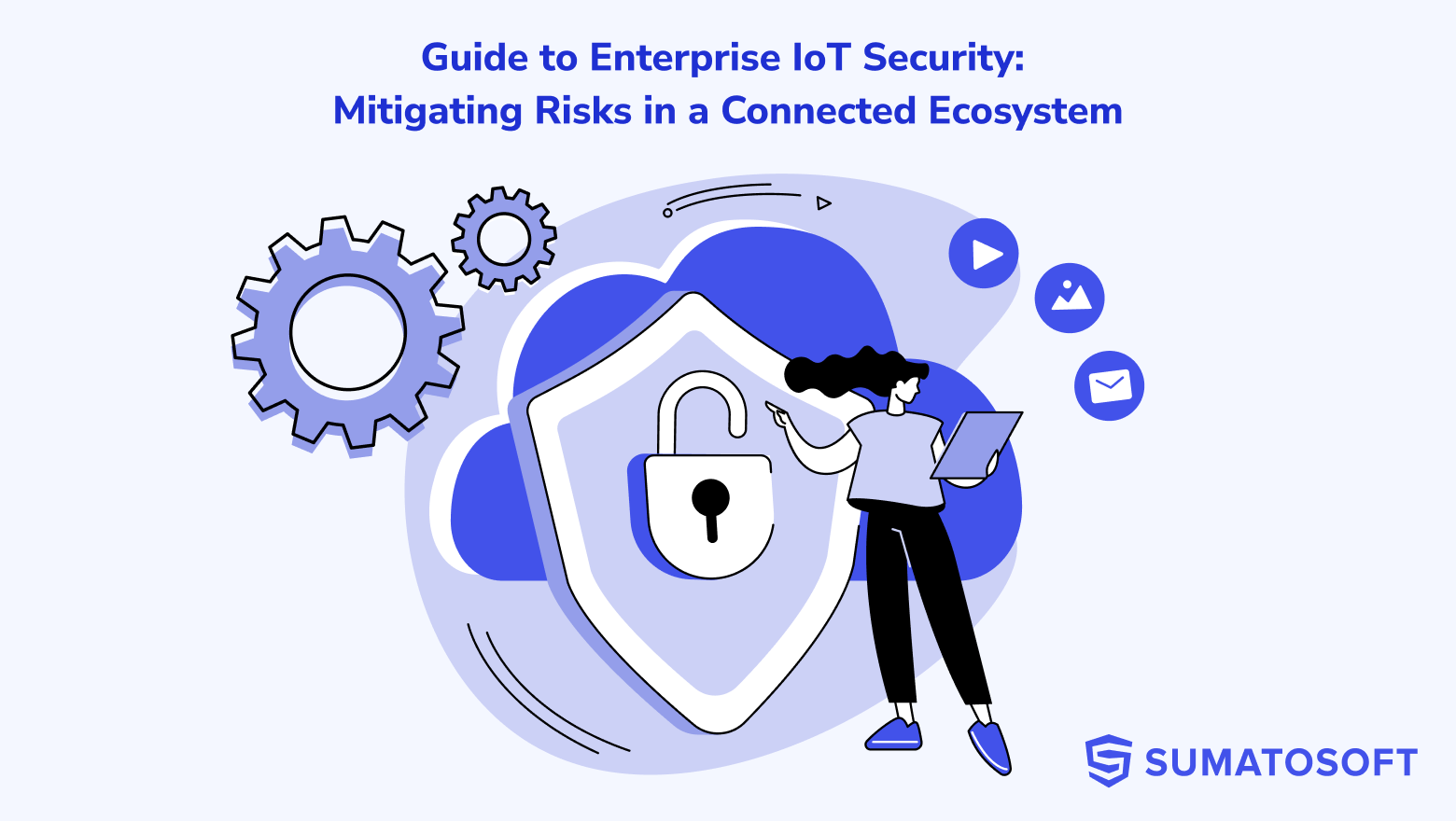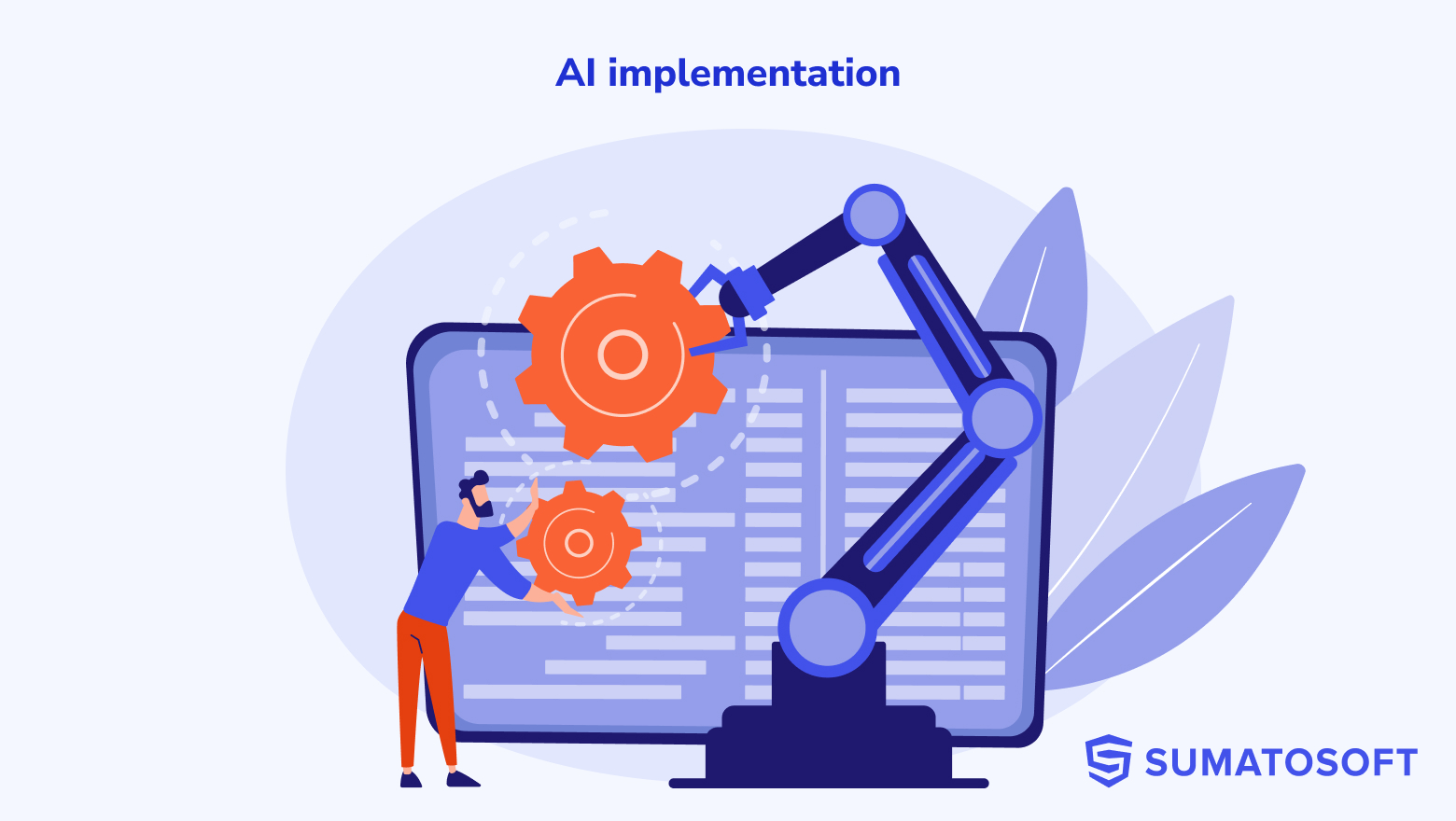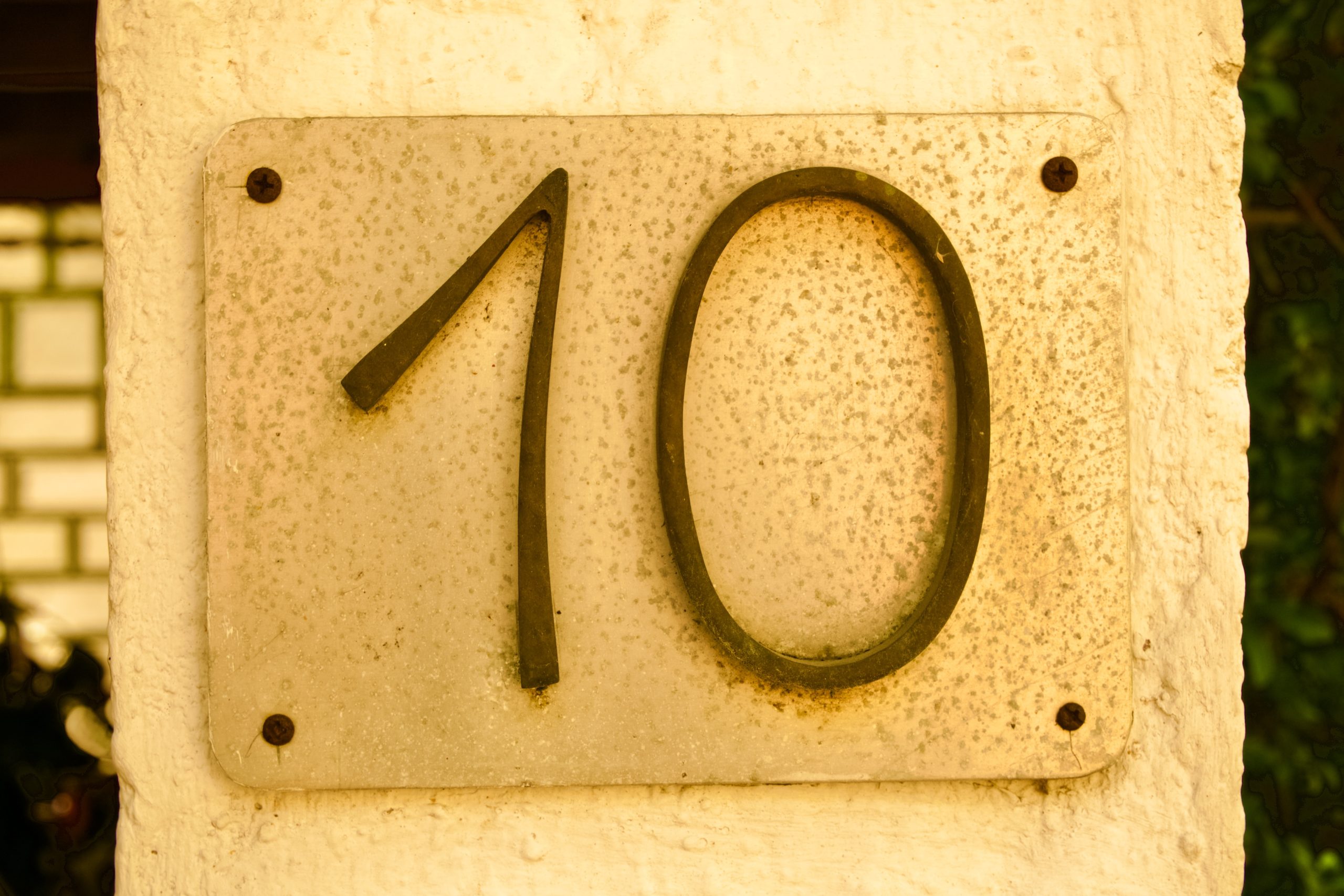The Ultimate: Overview How Much Does It Cost to Create an NFT?
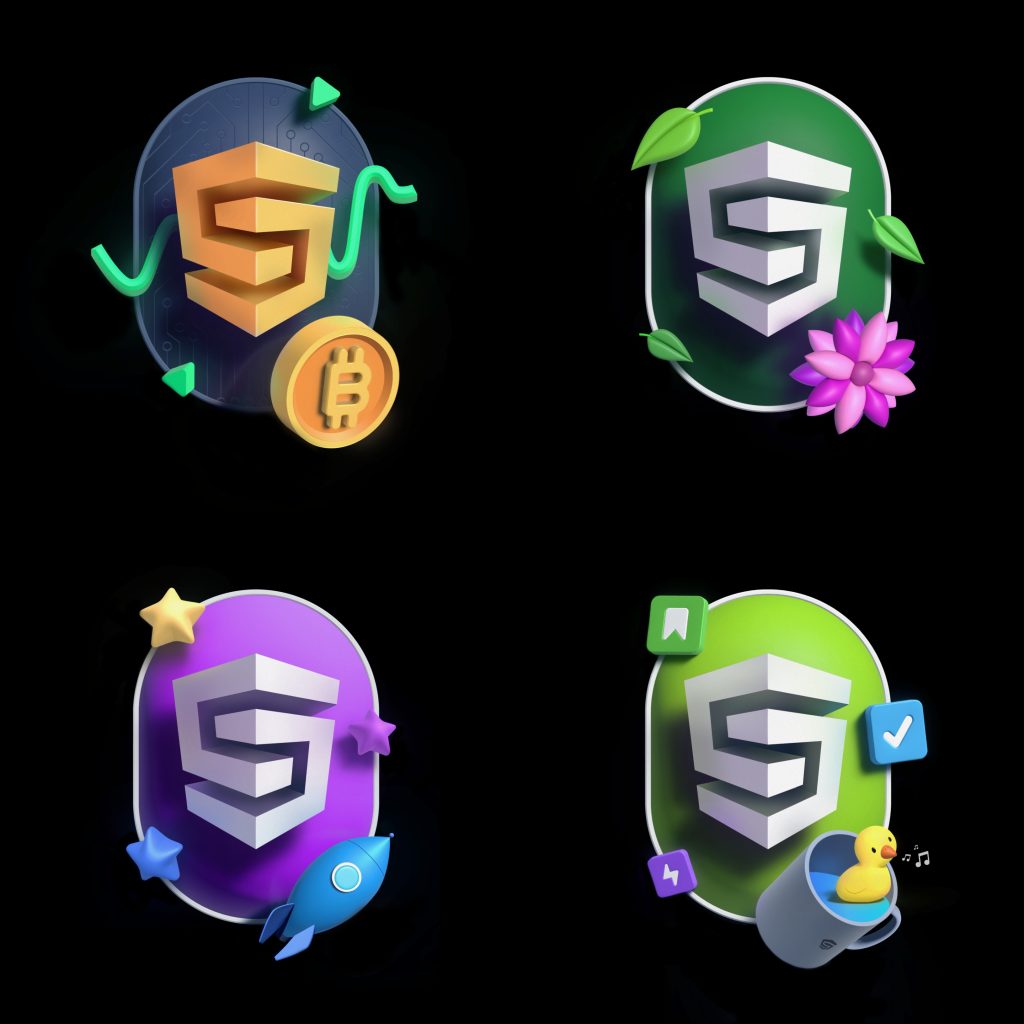
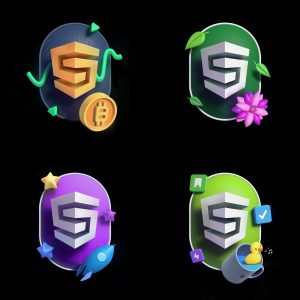
Editor’s note: This article turned out to be more than just a theoretical answer to the question of NFT creation costs. It became a fusion of knowledge and hands-on experience of placing 4 NFTs on different marketplaces. More than half of the article describes a unique experience you can’t find elsewhere on the internet.
The world of Non-Fungible Tokens (NFTs) has gained massive attention during the COVID times. The number of active wallets in 2021 experienced a huge increase of 1,822% compared to 2020. This number includes active wallets making any NFT transaction (buying, selling, holding, using the blockchain).n
These unique digital assets have opened up unprecedented opportunities for creators and collectors alike.
But how much does it actually cost to create an NFT?
In this article, we will delve into the realm of NFTs, define the difference between minting and creating NFT and discuss associated costs. As a part of an article, we’ll mint 4 NFTs on different NFT marketplaces and describe this in the section SumatoSoft Life Experience.
I’m a content manager at SumatoSoft company. Together with my colleague, a blockchain developer, we’ll showcase to you the process and costs of creating an NFT. Whether you’re an artist, a collector, or just intrigued by the concept, this journey can offer valuable insights into this burgeoning digital landscape.
Main definitions
Blockchain – is a secure, decentralized and transparent system of records, where each block contains information linked to the previous block, forming a chain.
Token – In the context of blockchain and cryptocurrency, a token is a digital representation of a particular asset or utility.
NFT – or Non-Fungible Token, is a unique digital asset stored on a blockchain that represents ownership or proof of authenticity of an item.
Digital asset – A digital asset is any type of content in digital forms, such as photos, videos, files, cryptocurrencies, or tokens, that comes with the right to use.
Marketplace – is a platform or venue where goods, services, or digital assets like NFTs can be bought, sold, or traded.
Smart contracts – are self-executing contracts with the terms of the agreement directly written into lines of code; they automatically enforce and execute themselves when certain conditions are met.
Crypto wallet – is a digital tool that allows users to securely store, manage, and transact with cryptocurrencies like Bitcoin, Ether, and others, as well as digital assets like NFTs.
What is NFT
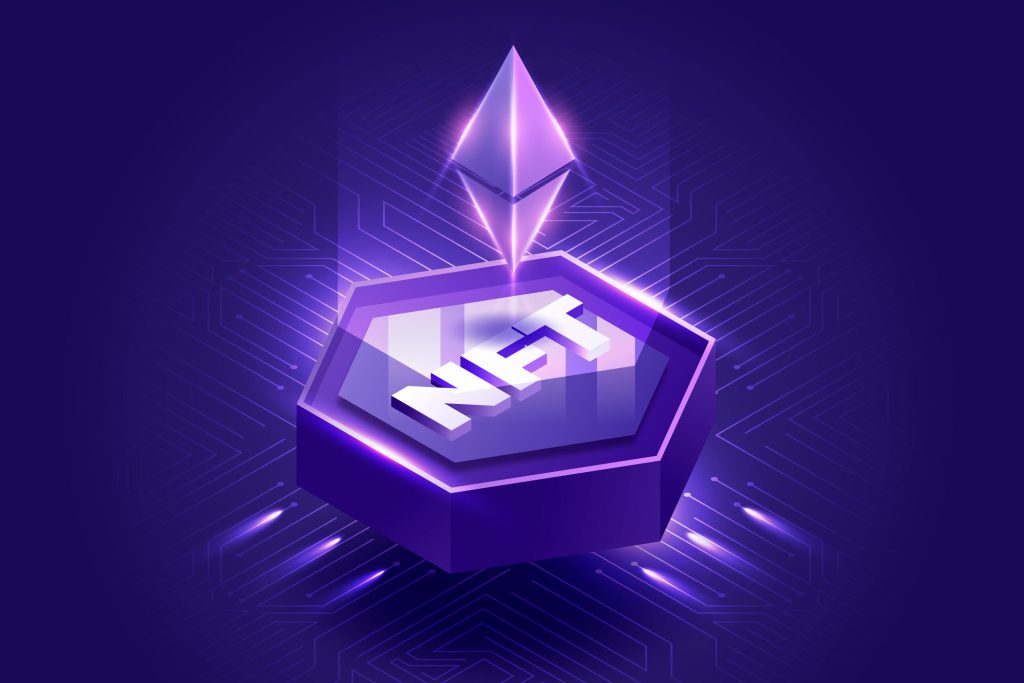
Imagine you have a unique, one-of-a-kind baseball card. Now imagine you could have a digital version of that card – that’s kind of what an NFT is. NFT stands for Non-Fungible Token. “Non-fungible” is a fancy way of saying that each one is unique and can’t be replaced with something else.
So, an NFT is like a special type of digital collectible. Unlike something like a digital coin (where each one is the same as the others), each NFT is unique. You can own an NFT of a piece of art, a music album, or even virtual property in a video game. Basically, it’s a way to prove that you own a digital item and it’s totally unique!
Interesting Statistics About NFT
- The total value of NFT transactions quadrupled to $250 million in 2020, and it further skyrocketed in 2021, with the entire NFT space growing from $340 million to $23 billion, translating to a whopping 7200% increase in value.
- The world’s most expensive NFT to date was sold for over $69 million at a Christie’s auction in March 2021.
- Digital art makes up a significant portion of the NFT market, but it also extends to music, virtual real estate, and more.
- One memorable event saw a tokenized representation of a tweet sold for $2.9 million in an experiment by George Mason University economics professors on their blog, Marginal Revolution.
- According to a market report in 2022 by NonFungible, the NFT market is currently in a stabilizing phase and is showing signs of a coming boom.
What is NFT Minting
Minting an NFT is the process of turning a digital file into a unique digital asset on the blockchain. It’s like making a digital certificate for your digital item to show that it’s unique and that you own it.
Imagine you’ve drawn a digital picture. To mint it as an NFT, you would upload your artwork to an NFT marketplace. This process of uploading and creating an NFT is called “minting”. Once it’s minted, it gets its own unique identification and proof of ownership, which are stored on the blockchain.
Here’s where the distinction lies between simply uploading a digital file to a platform like Google Drive and minting an NFT: when you upload a file to Google Drive, you’re storing a copy of your work on a centralized server. Anyone with access can view or download it, and there’s no unique identification tied to the file. But when you mint an NFT, you’re registering it on a decentralized, transparent, and secure system (the blockchain). This record confirms the uniqueness of your digital asset and your ownership of it. Plus, it’s unalterable, lending a strong level of authenticity and security to your NFT.
This blockchain record is what makes your NFT special – it’s a permanent, unchangeable record that your NFT is yours and is one-of-a-kind.
In essence, while both uploading to Google Drive and minting an NFT involve digital files, minting takes an extra leap by securing your asset’s uniqueness and ownership on the blockchain. In the following sections, we’ll explore where these NFTs are stored and the costs associated with minting them.
SumatoSoft’s blockchain specialist wrote a more comprehensive and detailed article on the technical aspect of the blockchain. If you are ready to knuckle down and go into the more technical part, here is the link: Fundamentals of blockchain architecture.
Where Are NFTs Stored
While NFTs and their ownership records reside on the blockchain, the actual digital files associated with NFTs are typically not stored directly on the blockchain. This is due to the storage limitations and high costs that would be associated with storing large amounts of data on the blockchain.
Instead, what gets stored on the blockchain is the metadata associated with each NFT. This metadata includes a unique identifier for the NFT and a link to where the actual digital file is stored. This link can point to a location on a regular web server or, more commonly, a decentralized file system like the InterPlanetary File System (IPFS).
IPFS is a distributed file storage system that allows files to be stored in a decentralized way across multiple nodes in a network. When a file is added to IPFS, it’s given a unique hash, which is then included in the NFT’s metadata on the blockchain.
In this way, even though the digital file associated with an NFT is not stored on the blockchain, the blockchain contains the information necessary to locate and access the file. This setup maintains the security, transparency, and decentralization that are the hallmarks of NFTs.
How Much Does NFT Minting Cost
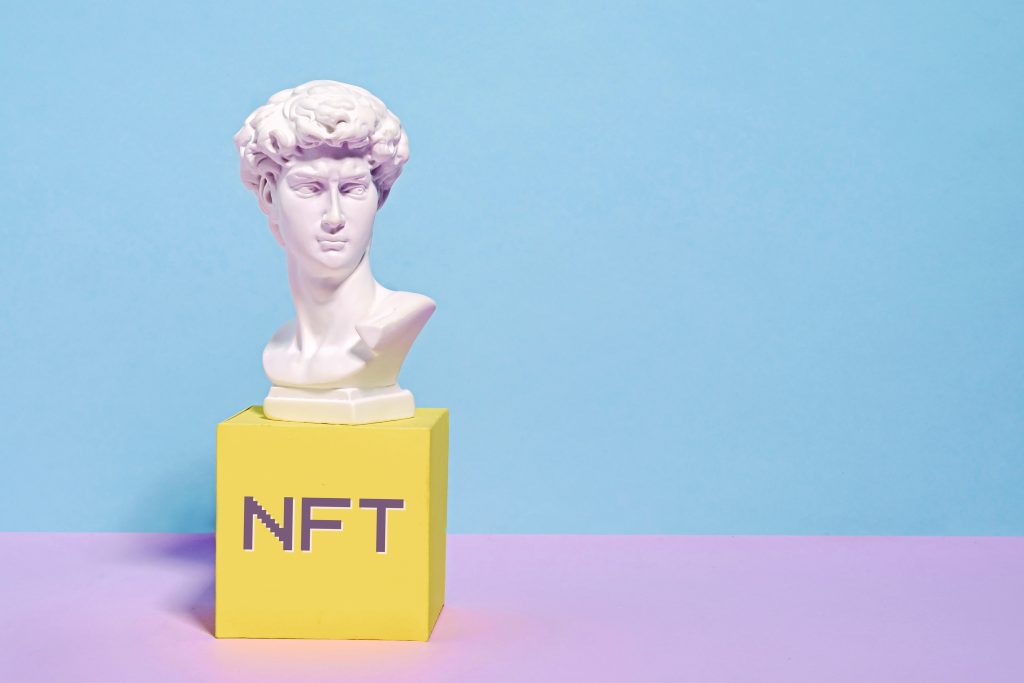
NFT isn’t NFT until it is minted. So, the question “how much does it cost to create an NFT?” usually has a little different meaning: “how much does it cost to mint NFT”. So, here we don’t consider the NFT creation costs since they purely depend on your approach to NFT creation. You can hire a professional designer or draw a picture using the Paint program – the creation cost will correspond.
Minting an NFT involves several costs, primarily driven by the blockchain’s network traffic, the complexity of operations, and the chosen marketplace. Here are the key factors that contribute to the total cost of minting an NFT:
- Gas fees – the term “gas” refers to the computational effort required to execute operations on the blockchain network. In the context of NFTs, a gas fee is the cost you pay to mint your digital asset on the blockchain. These fees vary depending on the network’s congestion and the complexity of the operation. High network demand often leads to increased gas fees. On Ethereum, one of the most popular blockchains for NFTs, gas fees can range from a few dollars to over $100 during peak times.
- Account fees – This is the cost associated with setting up an account on an NFT marketplace. In some cases, to successfully sell NFTs on the marketplace, you need to create accounts/stores/collections (Mintable, MyTrade), which is also an entry in the blockchain and, accordingly, costs money (approximately $70-120 as of mid-2023). But there are quite a few sites where the user simply connects the wallet to the marketplace or goes through free registration.
- Service fees – also known as listing fees, these are the charges levied by the marketplace to list your NFT for sale. While some platforms offer free minting, they may still charge a fee when you list your NFT. This fee usually ranges from 1% to 5% of the sale price.
- Marketplace fee – a percentage-based cost that the platform or marketplace charges for facilitating the buying, selling, or trading of NFTs on their site. It usually varies from 1% to 5% of the selling price. Fortunately, you pay it when the seller transfers money to you. So, these are not direct costs of NFT minting, just keep them in mind.
Understanding these costs is essential before minting an NFT. The cost can be influenced by various factors including the chosen blockchain, the marketplace, the complexity of the operation, and the popularity of the NFT market at the time.
Lazy Minting: A Free Alternative to Minting NFTs
While traditional NFT minting can involve notable costs, there is a lesser-known method that allows artists and creators to bypass some of these expenses: lazy minting.
Lazy minting, also known as off-chain minting, is a process where an NFT is only minted when it’s bought for the first time. In other words, the NFT is minted “on demand”. This contrasts with traditional minting, where an NFT is minted immediately, regardless of whether there’s a buyer or not.
The primary advantage of lazy minting is its cost-effectiveness. Because the NFT isn’t minted until it’s purchased, creators can avoid upfront gas fees. Because Lazy Minting is free – it’s exactly what we are going to use when placing NFTs!
Lazy Minting: Technical Explanation

Lazy minting is made possible by using a different kind of smart contract known as a deferred smart contract. When an artist uploads their work to a platform that supports lazy minting, the platform creates a deferred smart contract that contains all the necessary data for minting the NFT, but it doesn’t actually initiate the transaction on the blockchain.
When a buyer decides to purchase the NFT, they are the ones who pay the gas fee to mint the NFT and complete the transaction. Hence, this method reduces costs for the creator, and the buyer is the one who covers the gas fee.
In essence, lazy minting provides an accessible gateway for creators to enter the NFT space without a substantial initial investment. It’s important to note that not all marketplaces support lazy minting, and the approach may not be ideal for all situations. Nevertheless, it’s a worthy consideration for artists seeking a more affordable path to mint their digital assets.
SumatoSoft Life Experience
When we decided to explore the cost of creating an NFT, we knew we had to do more than gather data and crunch numbers. We needed a real, hands-on experience. So, we took four distinctive pieces of digital art and embarked on a mission to mint them as NFTs on four different marketplaces. This gave us a firsthand view of the costs, processes, and unique nuances involved in each platform. So buckle up and join us on our unforgettable NFT minting journey as we dive into the realms of OpenSea, Rarible, Mintable, and SolSea! We’ll use the Metamask wallet since it’s the most popular crypto wallet.
OpenSea
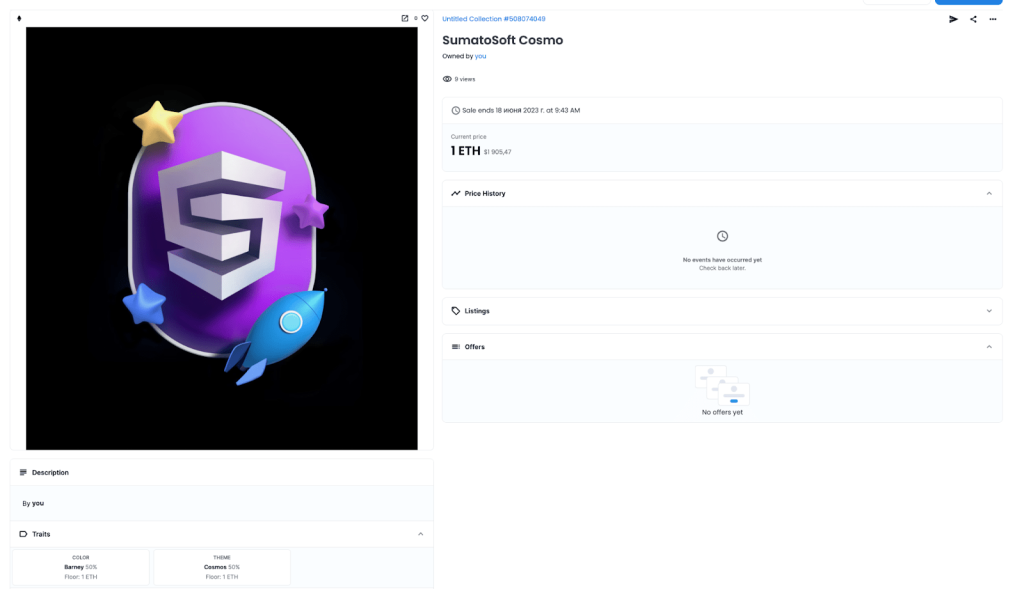
Blockchain: Ethereum
Other marketplaces for this blockchain: Rarible, Mintable
Marketplace: OpenSea
Other blockchains available on OpenSea: Polygon
Token address: 9096336235727183983309277605614589164368578082094804162546732267420231139329
The link to the NFT: link
Minting cost: $0
Features:
- User-friendly NFT description
- Free account set up and change
- Free and quick lazy minting
- NFT edit requires a gas fee
- Easy registration through MetaMask
Our journey:
Our first stop was OpenSea, a name that frequently tops the list of NFT marketplaces. Its popularity might be attributed to being one of the pioneers in the space or its substantial investment backing, but either way, it was our starting point.
Upon landing on OpenSea’s website, we were greeted with a vibrant display of trending collections and top NFT sellers. Logging in was seamless — just a click on the “Connect Wallet” button and a selection from a list of about 15 wallets. We found it refreshing that there were no logins or passwords to worry about. All we needed was our Metamask wallet.
Next, we clicked on the “Create” button, leading us to a form for a new NFT. The form had fields for uploading a file, naming the NFT, providing a description, choosing a collection, and selecting a network. The only networks available were Ethereum and Polygon. The process itself is not much different from adding a picture with a description and title to some database. I spent most of my 1 hour checking every step and every detail several times rather than on the process of minting.
Fortunately, OpenSea provides a lazy minting option. It happens in two stages: first, you create a token, then you can list it for sale. Once the token is listed for sale, any changes in data require a gas fee. After completing the creation form, we clicked “List for sale”. Here we encountered a form for sending NFTs for sale – it allowed us to choose the type of sale (auction or fixed price), the price for the NFT, and it also provided information about the service fee, which is 2.5% on OpenSea.
After completing the form and signing it, we successfully listed our NFT for sale on OpenSea, completely free of charge. It was a thrilling experience, and we can confidently say that OpenSea has rightly earned its spot at the top of NFT marketplaces.
Rarible

Blockchain: Ethereum
Other marketplaces for this blockchain: OpenSea, Mintable
Marketplace: Rarible
Other blockchains available on Rarible: Polygon, Tezos
Token address: Couldn’t find the info
The link to the NFT: link
Minting cost: $0
Features:
- User-friendly NFT creation
- Free account set up and change
- Free and quick lazy minting
- Low service fee
- Registration through MetaMask
- NFT deletion requires payment
Our journey:
Next, we ventured into the realm of Rarible. The main page structure and login process mirrored OpenSea quite a bit, with a notable difference: Rarible also offers the option to create your own marketplace on ETH and Polygon. Intriguing as that was, we were on a different mission.
On Rarible, clicking on “Create NFT” presented an immediate choice between creating a collection or a single token. Given we were using the Metamask wallet, two networks were available: Ethereum and Polygon. We considered creating an NFT on the Polygon network, but Lazy Minting (the feature enabling free NFT sales listing) wasn’t operational. The minting cost amounted to around 7 cents, so we decided to stick with Ethereum to save on costs.
We proceeded with the creation form with Ethereum selected and a single NFT in mind. A unique feature of Rarible is the ability to select the sale option immediately. Overall, creating the token wasn’t much different from our OpenSea experience, aside from Rarible’s lower service fee of 1% and the possibility of unlocking additional content post-purchase.
After confirming the creation of the NFT and a couple of signatures later, we had our free NFT on Rarible, based on the Ethereum network. Unfortunately, we couldn’t locate the token address information after creation, and we noticed that deleting an NFT required a gas fee.
In general, it was a pleasant experience quite similar to the one OpenSea offers.
Mintable
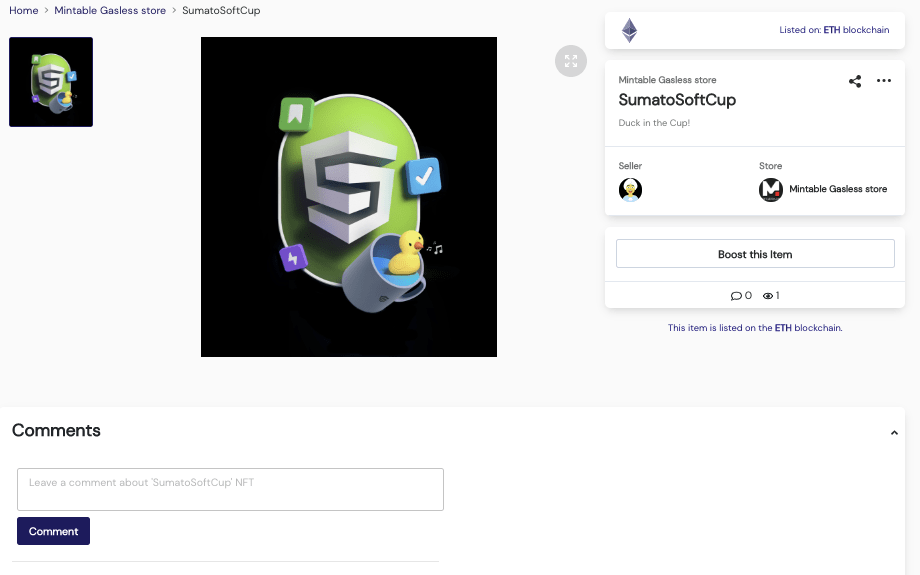
Blockchain: Ethereum
Other marketplaces for this blockchain: Rarible, OpenSea
Marketplace: Mintable
Other blockchains available on Mintable: XRP, IMX
Token address: 9096336235727183983309277605614589164368578082107590305474821124327555990071
Minting cost: $0
Features:
- User-friendly NFT sorting
- Free account setup
- Free and quick lazy minting
- NFT audio support
- Authorization with email (or Google/Facebook)
- Full token metadata visible on view page
- Deleting NFT requires payment
Our journey:
Our third destination was Mintable. Unlike the previous marketplaces, Mintable presented a more pronounced division by NFT type. On the main page, you could immediately select Audio and dive into musical delights. The previous platforms focused more on visual content; such a specific filter for audio was noticeably absent. This unique classification on Mintable piqued our interest.
However, the registration process was a bit of a headache. The form contained the field “confirm your email” which isn’t a big deal, but in our opinion, it’s a little outdated and annoying thing. We also faced some issues with javascript working properly during password matching – we couldn’t match the passwords whatever we did. But we have bigger fish to fry – when I clicked the registration button, nothing happened. I tried from incognito, and it was nothing again. No reaction, no notifications, just silence. Okay, let’s try social authentication if have such an option. Well, it worked, and I became kirstin58293 – cool nickname, thanks, mintable.
Thus, the registration requires an email or linking a Facebook or Google account. This felt like an unnecessary step and seemed to breach the principle of anonymity in the crypto space. The flow with registration through a Metamask wallet appeals to me more.
Getting to the actual NFT creation took a bit of figuring out. Unlike the other platforms with “Create” buttons, Mintable featured a less conspicuous “Mint” button. It sounds more logical, but we furiously tried to find the familiar user flow with the “Create” call to action. Actually, we did it and found an option to create a Store. It was shocking at first glance because Shop creation involved a transaction of about 0.13 ETH ($260). I was about to leave this place but found the button “Mint” and gave the benefit of the doubt to it.
Upon clicking the “Mint” button, we could choose from Ethereum, Ethereum L2 (IMX), and XRP networks. We selected IMX with the Gasless option, connected to the Immutable X network through the Metamask provider, and landed on the NFT creation form. Mintable offers two types of settings: Easy and Advanced. We chose the path of least resistance, opting for Easy mode.
Interestingly, the token creation fields on Mintable varied from the previous platforms. Besides name, description, and sale settings, it also allowed the selection of royalty (not available for the Ethereum network in this marketplace) and category settings for the previously mentioned filters. The service fee on Mintable also stood at 2.5%.
However, we ran into some issues with the Immutable X network that prevented the transaction from being completed. Thus, we decided to switch to Ethereum and finalize our NFT creation there. After filling out the form, confirming the creation in a new window, and subscribing, we had our free NFT token on Mintable, minted on the Ethereum network.
SolSea
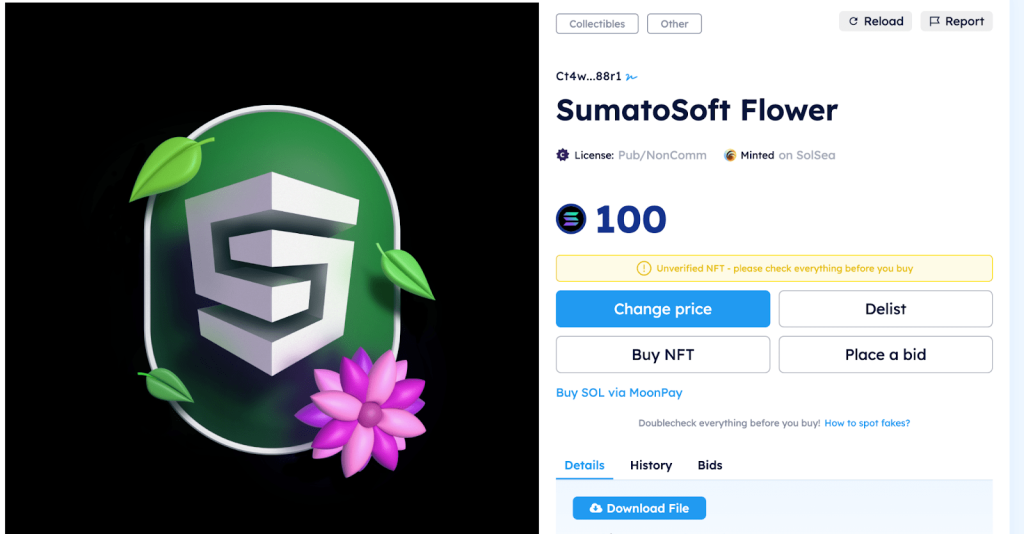
Blockchain: Solana
Other marketplaces for this blockchain: Nifty Gateway, Magic Eden, Solana Art
Marketplace: SolSea
Other blockchains available on SolSea: –
Token address: EFcJsECVTfxDhypbi8rmYr9VdjeW2W3YijiBusmXjNh5
The link to the NFT: link
Minting cost: $0,8
Features:
- Extensive functionality
- NFT audio support
- Free account setup
- User-friendly NFT creation
- No option to edit NFT after the creation
- All NFT transactions are payable
Our journey:
For our final adventure, we decided to delve into another cryptocurrency, Solana, and navigated our way to the SolSea platform. At first glance, SolSea reminded us of early-day Amazon, its bluish color scheme and numerous, densely packed functions giving off a similar vibe. While a bit overwhelming, the amount of functionality was impressive, and everything was conspicuously placed, which certainly bolstered our confidence in the platform. It truly felt like a well-rounded project.
Logging in to SolSea followed a process similar to Mintable – registration via email and wallet connection. However, instead of Metamask, we utilized Phantom, a wallet that supports Solana, ETH, Matic (Polygon), and SOL tokens.
Once logged in, we quickly spotted the ‘Create NFT’ option in the convenient, extensive menu under the first ‘Create’ tab. This process consisted of five stages. While not presenting anything new, the platform offered plenty of functions. We input token type, information, description, external link, license, royalties, and finally uploaded the content. The platform made sure to inform us about the minting cost at this stage – alas, no more freebies; it was time to pay. But we were prepared. Our commission rounded up to almost 0.03 SOL, equivalent to about $0.6 as of mid-2023.
After reading and acknowledging that the data cannot be altered post-creation, we minted our NFT. But there was still one more step. Similar to OpenSea, we had to list the NFT for sale. We navigated to the token page and clicked ‘List’. The platform also charged a fee for this – roughly 0.07 SOL. But on the bright side, our NFT was now available for purchase.
In total, we ended up with an NFT on the SolSea marketplace on the Solana network at the cost of ~$0.8.
Nifty Gateway, Solana Art
Navigating the NFT marketplace ecosystem, we came across Nifty Gateway and Solana Art, two platforms that operate differently from the ones we previously explored. Rather than allowing anyone to mint NFTs, these platforms cater to specific partners or creators with worthwhile projects.
On Nifty Gateway, we could log in using an email, while on other platforms, a simple wallet connection sufficed. It became apparent that these marketplaces facilitated the creation and sale of NFT collections exclusively for specific partners or creators. These individuals or entities typically become partners after completing a form and obtaining approval from the platform.
Despite being unable to become creators ourselves, we decided to examine the forms on Solana Art and Nifty Gateway to understand what a potential creator should be prepared for.
The following fields typically needed to be filled:
- Project name
- Project Description
- Project Supply
- Website, Twitter, Discord, and other social network links
- Minting date
- Images, project banners
- Candy Machine ID (only for Solana Art)
- Contact information (Email or Discord)
After submission, the creator needs to wait for the platform to reach out via email. We couldn’t fill out the form again, possibly a spam prevention measure taken by the platforms.
So, while we couldn’t directly experience the NFT creation process on Nifty Gateway and Solana Art, we gained a broader understanding of the variety of models operating in the NFT marketplace ecosystem. These platforms cater to a specific segment of creators, emphasizing the diversity and scope of opportunities available in this space.
Continue the Journey with the SumatoSoft Company!
As we wrap up our journey, we encourage you to explore this thrilling landscape of NFTs and cryptocurrencies. We hope now you see the difference between the cost of creating NFT and the cost of NFT minting. In the article, we discussed the costs associated with NFT minting, while we didn’t consider the NFT creation costs. Actually, NFT creation didn’t take too long since our awesome and talented in-house Art Director designed them! If you find his work appealing, you can partner with him through our design services!
Whether you’re looking to mint your own NFTs or are curious about the potential of blockchain technology, there is always a new frontier to explore. SumatoSoft is one of the top blockchain consulting companies! At SumatoSoft, we have an experienced team that can assist with NFT minting, blockchain development, smart contract creation, and much more. We are equipped with the knowledge and technical capabilities to guide you through the complexities of these exciting digital domains. If you’re eager to delve into the world of NFTs or are looking for assistance with your blockchain projects, don’t hesitate to reach out to us.
Let’s start
If you have any questions, email us info@sumatosoft.com

